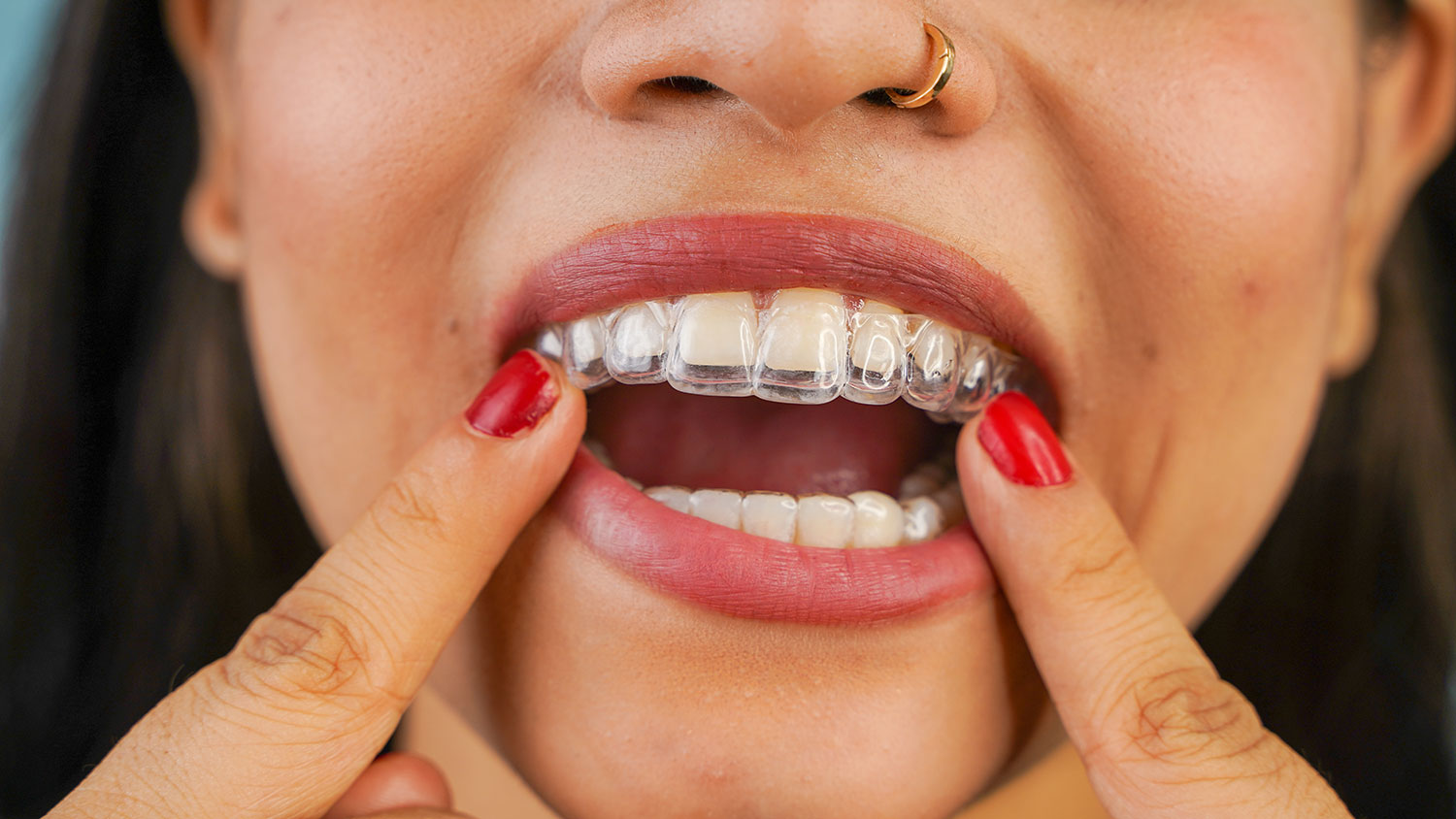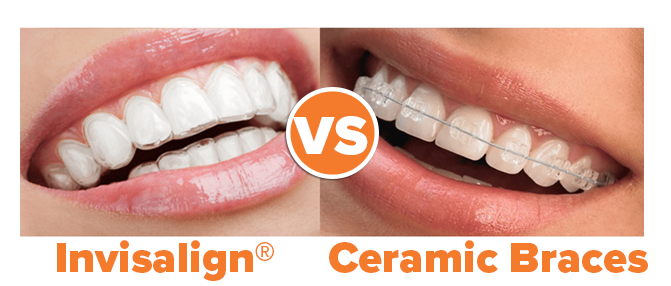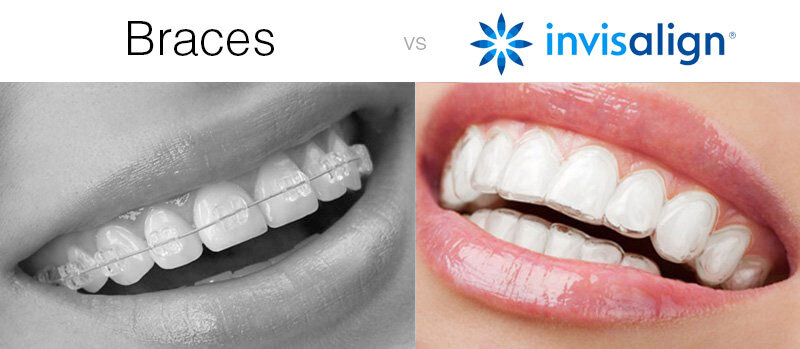Leading Factors to Select Invisalign Over Other Orthodontic Treatments
Leading Factors to Select Invisalign Over Other Orthodontic Treatments
Blog Article
Invisalign vs. Typical Dental braces: Which Option Is Right for You?
When taking into consideration orthodontic therapy, the choice between Invisalign and typical dental braces provides several vital aspects that merit careful analysis. Invisalign uses a discreet choice with removable aligners, while traditional dental braces supply a more noticeable yet efficient service for extreme imbalance.
Overview of Therapy Choices

On the other hand, typical braces consist of steel braces and wires that are bound to the teeth. This technique uses continuous pressure gradually to attain alignment. While effective for complicated orthodontic concerns, typical braces require routine brows through for adjustments and can position difficulties in preserving dental health as a result of the difficulty of cleaning around brackets and cables.
Both choices have their qualities, and the selection often rests on particular dental conditions, way of life preferences, and client conformity. Inevitably, getting in touch with an orthodontic specialist is crucial for identifying the most suitable treatment strategy customized to specific demands. Recognizing the subtleties of each choice can substantially affect the general success of orthodontic therapy.
Aesthetic Factors To Consider
A substantial element influencing the option in between Invisalign and standard braces is the visual charm each treatment uses. Invisalign aligners are crafted from clear plastic, making them essentially invisible when put on.
On the other hand, typical dental braces consist of steel brackets and cords, which can be much more noticeable. While innovations in orthodontic technology have actually led to the advancement of smaller brackets and tinted elastics, conventional dental braces still maintain a more obvious profile. For some individuals, the presence of braces may hinder them from seeking needed therapy.
Ultimately, the option in between Invisalign and conventional dental braces might hinge on personal choices regarding appearances. Patients who focus on discernment frequently lean towards Invisalign, while those that are much less concerned about visibility might select conventional dental braces. Recognizing the aesthetic implications of each choice is critical for making an informed decision that aligns with one's way of life and choices.
Convenience and Convenience

In regards to ease, Invisalign aligners are detachable, enabling people to appreciate their preferred foods without limitation and keep optimum oral health. Brushing and flossing are streamlined, as the aligners can be obtained during these routines, whereas typical braces require mindful steering around brackets and cables.
Furthermore, Invisalign's progressive system enables fewer orthodontic check outs. Patients usually obtain numerous collections of over here aligners at the same time, which can streamline the treatment process and lower time spent in the orthodontist's chair. In comparison, typical dental braces require normal modifications, making them less practical for those with active routines. Invisalign. Overall, the convenience and benefit of Invisalign make it an attractive selection for lots of people seeking orthodontic therapy.
Therapy Duration and Effectiveness
While both Invisalign and standard braces work in fixing oral imbalances, the period of treatment can differ substantially between the two alternatives. Generally, Invisalign therapy can take anywhere from 12 to 18 months, depending on the intricacy of the situation. The clear aligners work by gradually changing teeth right into their wanted positions, and routine follow-ups with an orthodontist help guarantee development remains on the right track.
In contrast, standard dental braces frequently call for a longer commitment, normally varying from 18 months to 3 years. This is due to their fixed nature and the usage of wires and brackets, which can be much more reliable for intricate cases and serious imbalances (Invisalign). The therapy performance of standard dental braces is well-documented, as click here to read they permit precise changes and greater control over tooth activity
Inevitably, the choice between Invisalign and typical braces might depend upon both the anticipated treatment duration and the details oral concerns at hand. Consulting with an orthodontist is essential, as they can supply customized referrals based on individual demands, guaranteeing the picked approach aligns with preferred results and timeframes.
Expense Contrast and Insurance Options
Price plays a considerable role in the decision-making procedure for individuals considering orthodontic therapy, whether choosing Invisalign or typical dental braces. On average, the price of Invisalign ranges from $3,000 to $8,000, while typical braces generally set you back between $2,000 and $6,000. Variables influencing these prices include the intricacy of the case, the period of treatment, and geographical place.
Insurance protection can significantly affect out-of-pocket expenses. Lots of dental insurance policy plans give partial coverage for orthodontic therapies, yet the specifics can vary extensively. It is essential for people to review their insurance policy plans to identify the level of coverage for either choice. Normally, traditional braces might be extra frequently covered by insurance coverage strategies compared to Invisalign, which some insurance firms classify as an aesthetic treatment.
Furthermore, numerous orthodontic techniques supply adaptable layaway plan, making both treatment options more available. Clients ought to ask about prospective financing options and discounts for upfront payments. Evaluating the total cost, consisting of insurance policy advantages and repayment plans, is vital for making a notified decision that aligns with both aesthetic choices and spending plan factors to consider.

Conclusion
In recap, the selection in between Invisalign and standard braces rests on several factors, including visual preferences, comfort, therapy period, and cost. Invisalign uses a discreet, removable alternative that promotes oral hygiene and nutritional adaptability, while standard braces might be better for complex oral problems and typically come at a reduced cost point. Inevitably, assessment with an orthodontist is This Site necessary to assess specific situations and determine one of the most appropriate therapy choice for achieving ideal dental alignment.
When taking into consideration orthodontic treatment, the selection between Invisalign and traditional dental braces presents numerous essential variables that warrant careful examination.Comparing Invisalign and standard braces exposes distinct therapy options for orthodontic modification.While both Invisalign and conventional dental braces are effective in remedying dental misalignments, the period of treatment can differ considerably in between the two choices.Price plays a significant duty in the decision-making process for individuals taking into consideration orthodontic therapy, whether choosing for Invisalign or typical braces.In recap, the selection between Invisalign and conventional dental braces pivots on multiple elements, consisting of aesthetic preferences, comfort, therapy period, and cost.
Report this page